Warm up this winter with the medicinal ‘Jeonju Moju.’
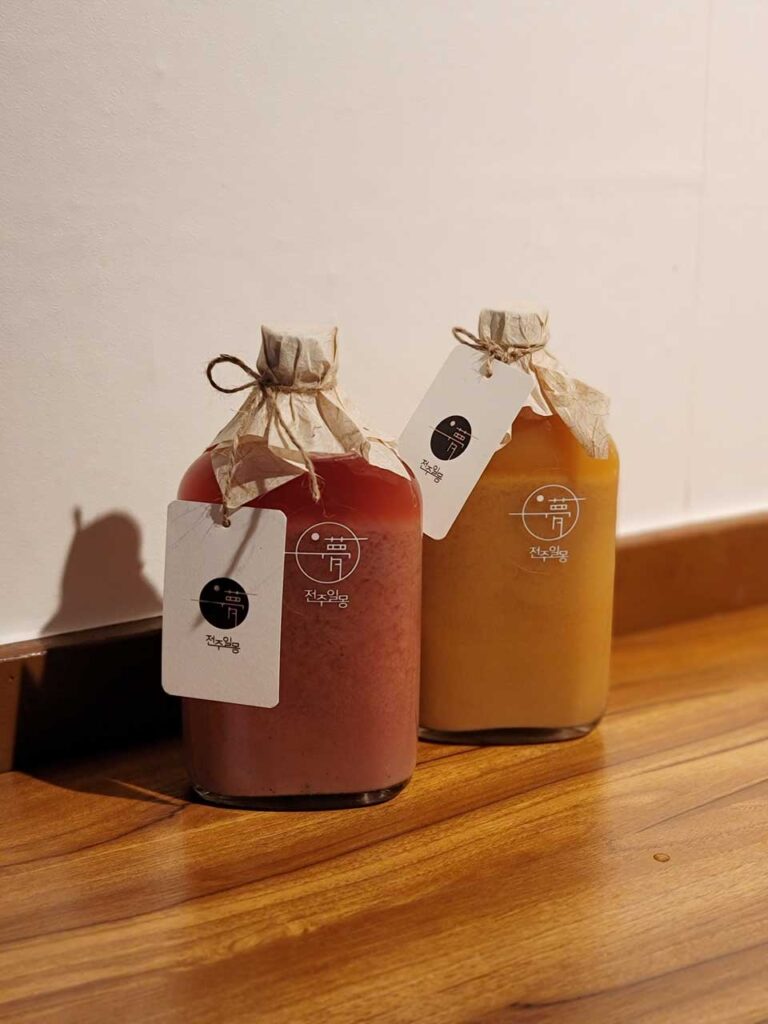
“Warm up this winter with the medicinal ‘Jeonju Moju.’”
| Learn everything about Moju from A to Z, straight from Jeonju locals.

On cold days, many people feel their energy wane and a chilly fatigue sets in.
In such times, a warm glass of Moju can melt away the cold and rejuvenate your energy.

Moju is a traditional medicinal liquor made by adding herbs like cinnamon, ginger, and jujubes to makgeolli or leftover alcohol lees.
These herbs help warm the body, enhancing blood circulation and aiding in cold prevention.
The origin of the name ‘Moju’ is linked to two stories.
One story from the Jeolla region is about a mother who created the drink with various medicinal herbs to care for her son who loved alcohol. Another story is from the era of Prince Gwanghae, when the mother of Queen Inmok prepared it for her people upon returning to her hometown.

Promoted as a regional heritage by the Ministry of Agriculture, Forestry, and Fisheries and the city of Jeonju in 2009, Moju has established itself as a traditional Korean folk liquor.


When visiting Jeonju, many travelers purchase the traditional liquor ‘Moju.’
Moju is readily available at stations and terminals.

Indeed, Jeonju’s famous bean sprout soup, bibimbap, and blood sausage soup restaurants also sell Moju.
Notably, pairing Moju with bean sprout soup, which contains asparagine, is noted to help with hangover relief.

Moju is excellent as a beverage during meals due to its sweet flavor and works well as a pre-meal or post-meal drink.
I personally enjoy cold Moju with meals and like having warm Moju with a simple snack before bedtime.
| Jeonju Moju Making Experience at Ilmong
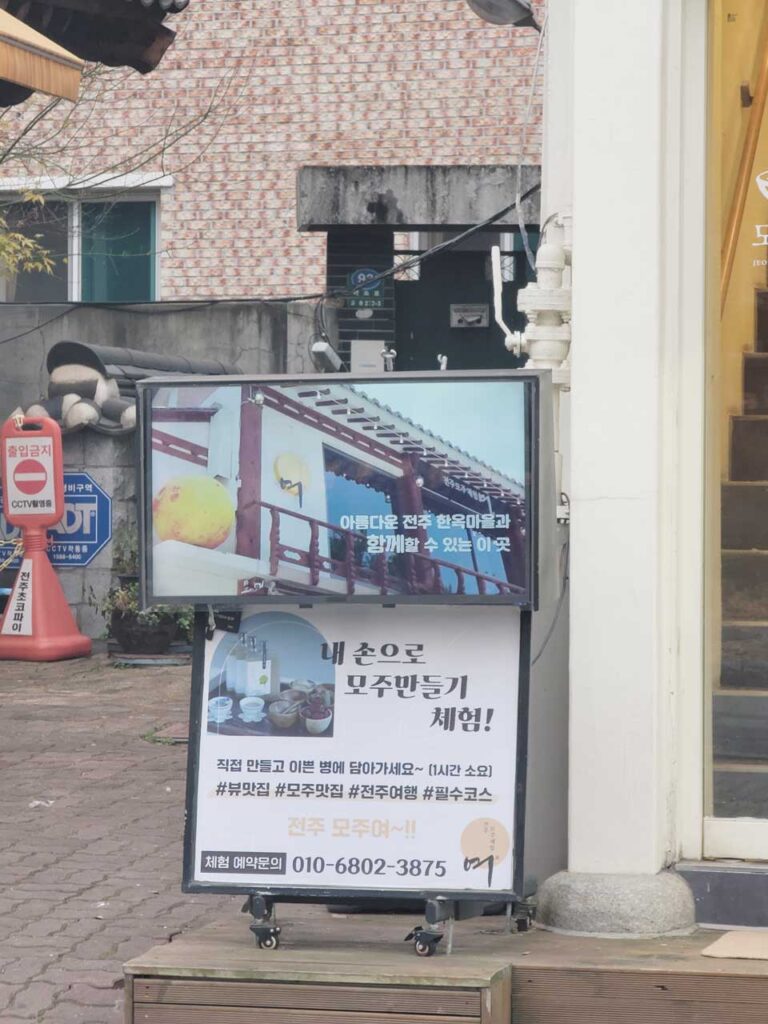
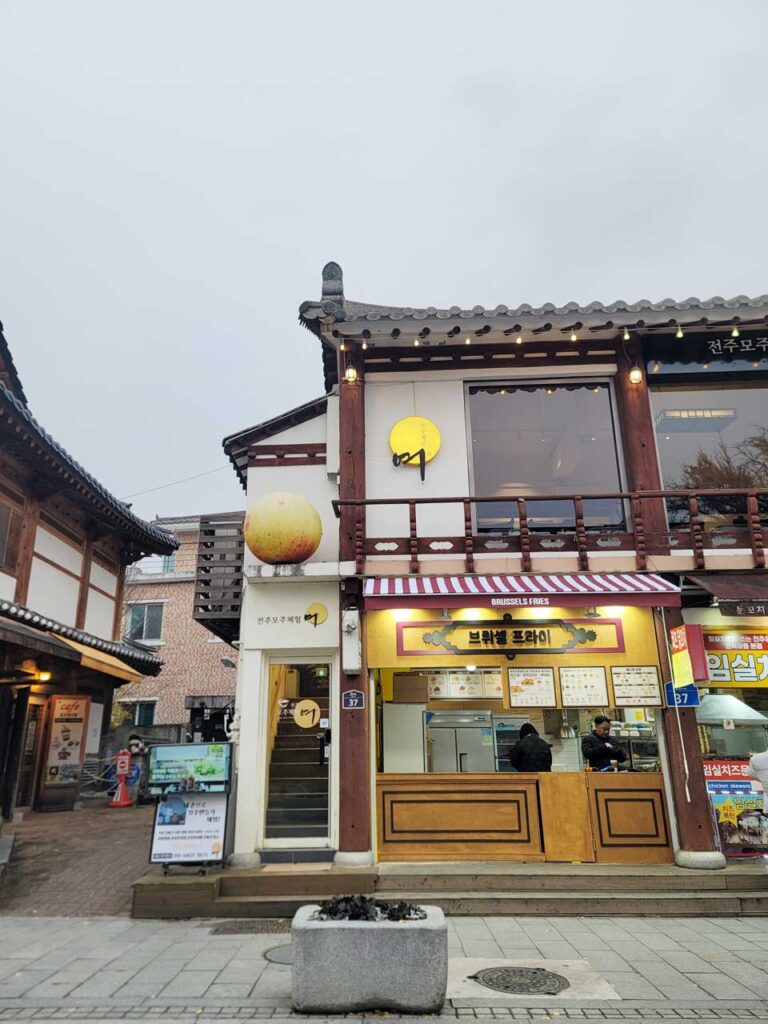
Now that you’ve learned about Moju, why not try making it yourself?
There are several shops in Jeonju Hanok Village where you can have a hands-on experience making Moju.

I visited ‘Jeonju Ilmong’ with a friend, where we made two types of Moju.
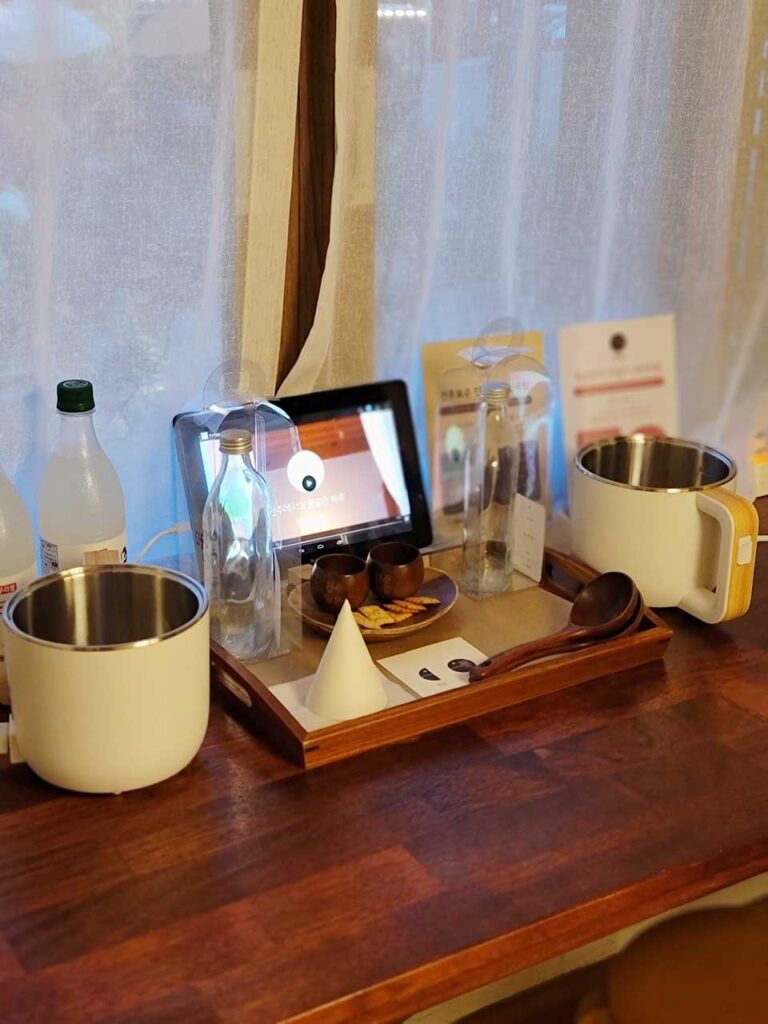

We received detailed cooking instructions and ingredients through a tablet and with assistance from the staff.
Start by boiling makgeolli in a cooker, then mix in dates, pears, ginger, and rose petals according to the shop’s developed recipe, place them in a simmer pack, and let it brew!
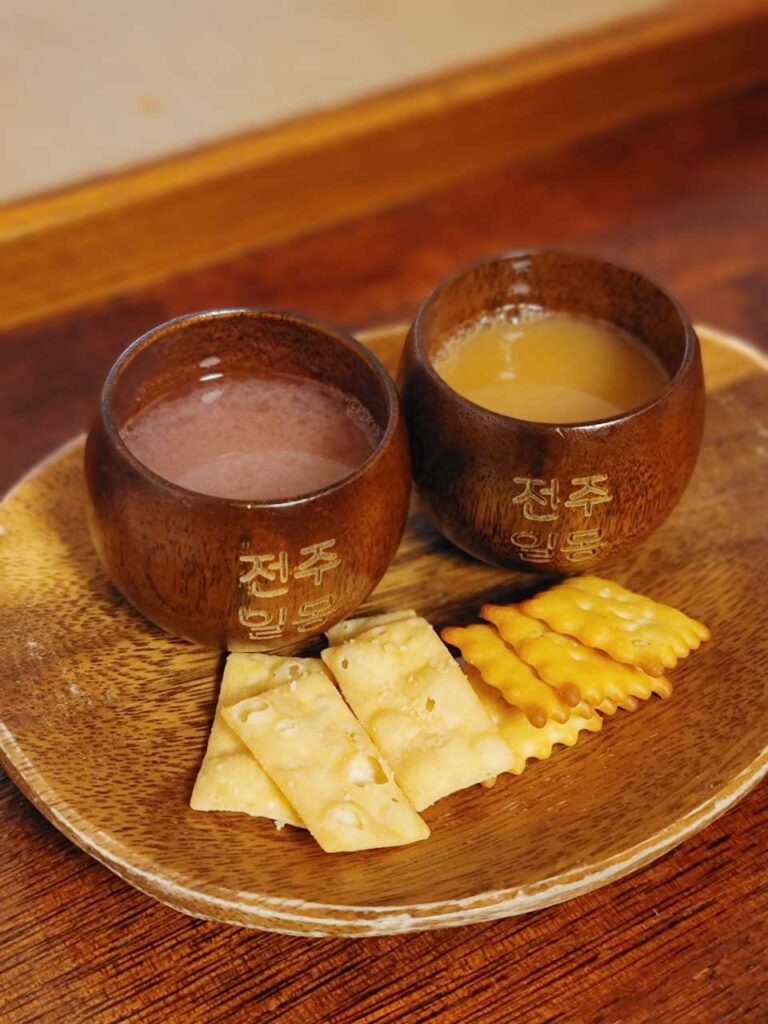

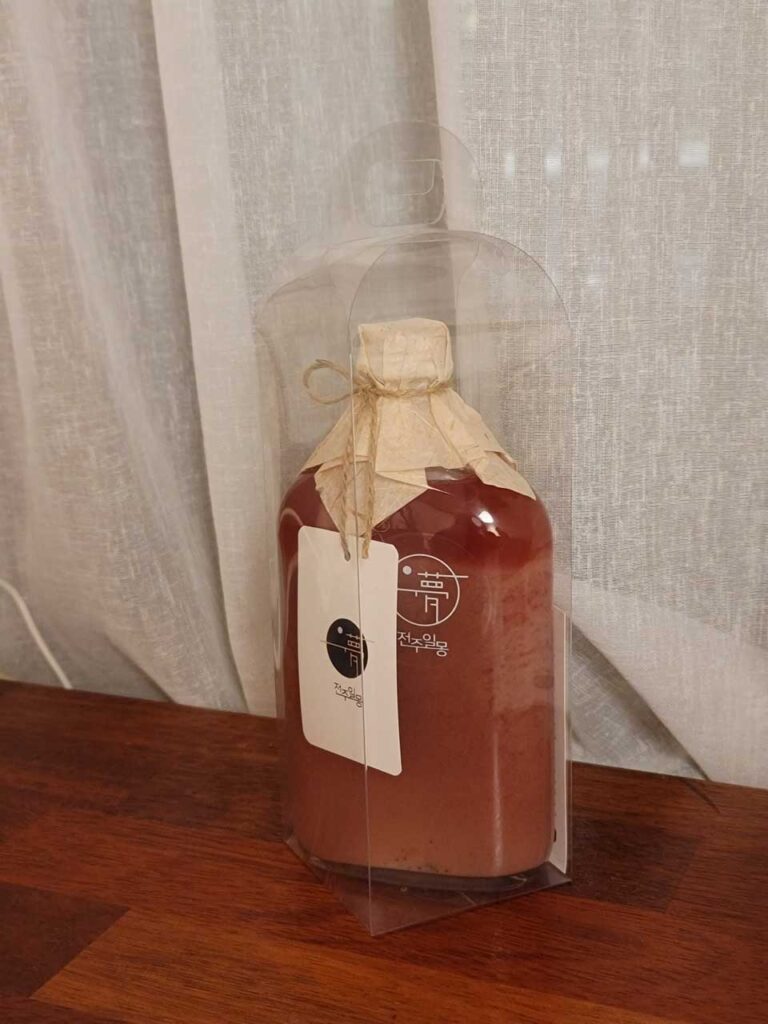
After making it, we enjoyed some simple crackers offered by the store to taste with the Moju.

I took the pink Moju I made home and enjoyed it with homemade anchovy noodle soup. The pairing with the hot dish was superb.
| You can make Jeonju Moju at home too!

I enjoy Moju and occasionally make it using a straightforward method.
You only need three ingredients: makgeolli, ssanghwatang, and sugar.
Using brown or black sugar helps enhance the color.

Ssanghwatang includes ingredients like ginger, jujube, apple, and cinnamon, as well as galgeun, danggi, and licorice, which are beneficial and readily available in stores, offering great value.


First, boil the makgeolli in a pot.
The longer it boils, the more alcohol evaporates, right?
Add an entire bottle of ssanghwatang.

Stir in 3-4 spoons of sugar.
Adjust the sugar to your taste.


After letting it cool slightly, use a funnel and a ladle to bottle it, and you’re finished!

I had a bit of a chill and drank some of the warm Moju before bed, which helped me feel refreshed the next day.
I suggest you either try making Jeonju Moju yourself or visit Jeonju and enjoy the unique local Moju at a restaurant or through an experience store.
Enjoy the delicious and nutritious Jeonju Moju and stay healthy this winter!
Jeonju Ilmong 93 Hyanggyo-gil, Wansan-gu, Jeonju-si, Jeonbuk State


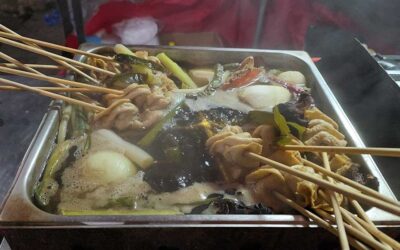

최신 댓글